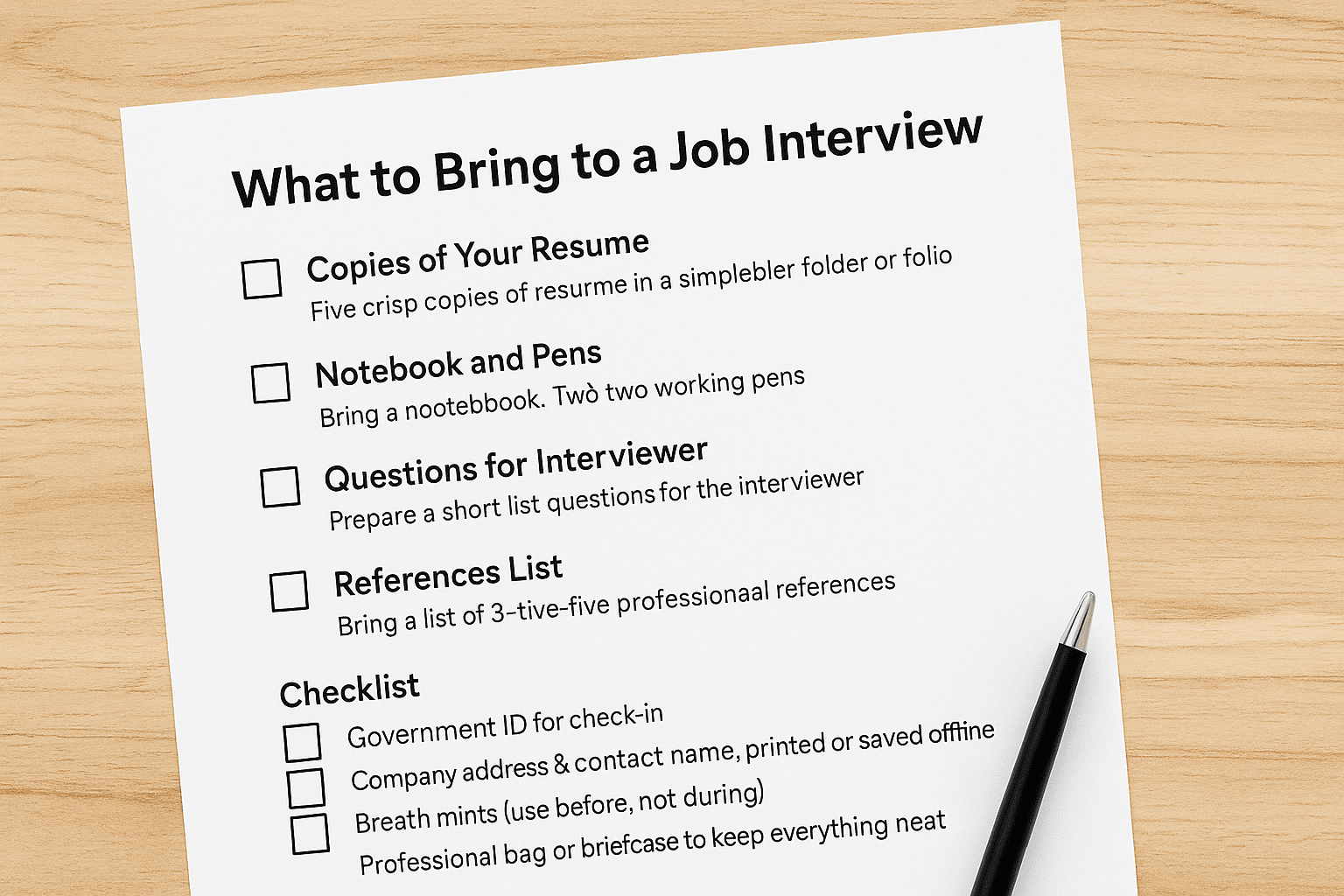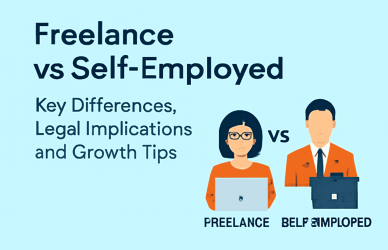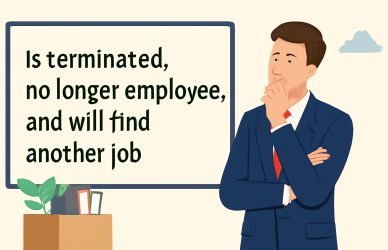Why What You Bring Matters
Showing up prepared is an instant credibility booster in what to bring to a job interview. The right items reduce stress, help you answer confidently, and signal professionalism before you even speak. The best interview checklists consistently recommend bringing printed materials, organizational tools, and small comfort items that make a strong first impression.
The Interview-Day Essentials
- 5 crisp copies of your resume in a simple folder or folio
- Notebook + two working pens
- A short list of questions for your interviewer
- List of 3–5 professional references
- Government ID for check-in
- Company address and contact name (printed or saved offline)
- Breath mints (use before, not during)
- A professional bag or briefcase to keep everything neat
These items show that you’re organized, proactive, and serious about the opportunity.
Documents to Take to an Interview
Multiple printed resumes
Bring at least five copies; you never know how many interviewers will join at the last minute.
Tailored cover letter
Optional but advisable, some interviewers may not have thoroughly reviewed your application.
References sheet
One page with names, titles, companies, emails, and phone numbers—confirmed and neatly formatted.
Job posting + your notes
Print the job description and mark the key skills or experiences you plan to highlight.
Certifications or licenses (if applicable)
If your position requires specific credentials, bring copies to validate them on the spot.
Practical Tools
- Notebook + pens: Great for taking notes and capturing follow-up details.
- Breath mints or floss: Freshen up before entering the building.
- Small grooming kit: Comb, tissues, or blotting paper for a quick touch-up.
- Phone (on silent) with a portable charger: Use only for directions or emergencies.
- Water bottle: Keep it tucked away; sip before the interview.
Portfolio and Work Samples (When and How)
If your role involves creativity, data, or analysis, bring a portfolio of relevant samples ideally 2–5 strong pieces.
Include both printed summaries and digital versions that are accessible offline.
Include both printed summaries and digital versions that are accessible offline.
For technical or analytical jobs, summarize each example using this quick format:
Problem → Approach → Impact.
For creative roles, a mini look book or case brief with visuals and results is most effective.
Problem → Approach → Impact.
For creative roles, a mini look book or case brief with visuals and results is most effective.
Digital Interviews: What to “Bring” to Zoom/Teams
- Headset or quiet mic, checked 30 minutes before
- Charged laptop or desktop camera at eye level
- One-page “cheat sheet” of talking points (out of frame)
- Neutral, well-lit background
- Backup hotspot or mobile data ready in case of Wi-Fi issues
Even for virtual interviews, treat your setup like a physical meeting professional, clean, and distraction-free.
What Not to Bring to a Job Interview
- Chewing gum, food, or sugary drinks
- Loud fragrances or heavy cologne
- Oversized bags or clutter
- Fidget with items or your phone in your hand
- Negative comments about past employers
A Quick Packing Routine
- Print 5 resumes, 1 reference sheet, and 2 cover letters
- Add a notebook, two pens, and your question list.
- Place ID, directions, and parking info in an outer pocket
- Pack portfolio pieces and preload your digital version offline.
- Add breath mints; set your phone to silent.
- Lay out your pressed, professional outfit.
After the Interview: What to Use Right Away
Use your notes to send a personalized thank-you email that references specific topics discussed.
If the interviewer requested references or work samples, you’ll have them ready immediately.
Timely follow-up reinforces your professionalism and keeps you top of mind.
If the interviewer requested references or work samples, you’ll have them ready immediately.
Timely follow-up reinforces your professionalism and keeps you top of mind.
FAQs:
1. Is there anything I need to bring to a job interview?
Yes. Bring printed copies of your resume, a list of references, a notebook with a pen, and any credentials or certifications relevant to the job.
2. What documents should I carry for a job interview?
Carry multiple copies of your resume, your cover letter (optional but helpful), a reference list, and any identification or certifications you may need. Keeping everything organized in a folder or portfolio creates a polished impression.
3. What is a red flag in an interview?
Red flags include arriving unprepared, speaking negatively about past employers, failing to bring required documents, or appearing disinterested. Any sign that you didn’t research the company or role can also raise concerns.
4. Can I bring nothing to an interview?
Technically, you can. However, coming empty-handed may signal a lack of preparation. Even a pen, notebook, and resume copy show that you respect the process and value the opportunity.






